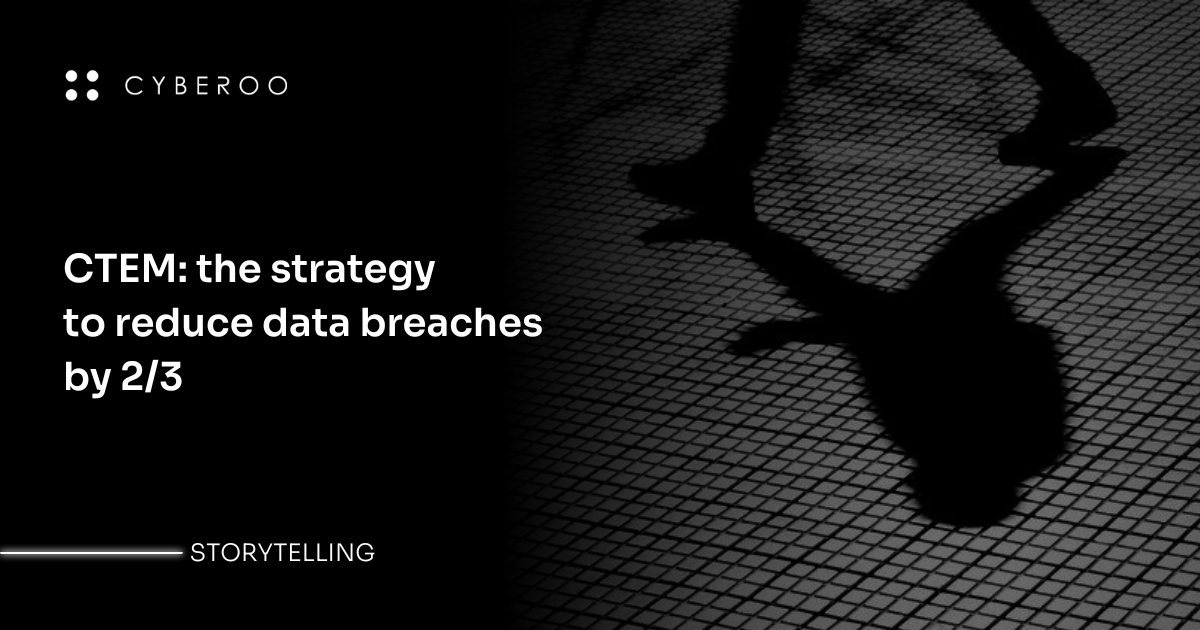Continuous Threat Exposure Management (CTEM) to reduce data breaches
Companies are embracing digital transformation at an accelerating pace. Therefore, managing the level of exposure to cyber risks has become crucial. Indeed, the adoption of new digital technologies and services helps companies to thrive, but it also contributes to a larger attack surface. As a result, the likelihood of ending up under attack also increases.
Automating controls and deploying security patches is not enough to prevent risks. The continuing evolution and sophistication of threats requires companies to keep abreast of the latest advances in security best practices and technologies to identify and prioritize what threatens the enterprise most. This is an ongoing effort to monitor and manage risks.
There comes the Continuous Threat Exposure Management (CTEM). It's about a five-step strategic approach to security coined by Gartner to minimize the risk of cyber attacks. Gartner ranks it second among the 10 strategic technology trends for 2024, innovations that promise to accelerate the achievement of business goals, especially in the age of artificial intelligence, and protect the organization by generating value.

How the CTEM framework works: the 5 steps for security
To structure a good strategy that puts the CTEM framework at the center, the starting point is to analyze the organization's attack surface (step 1), identifying potential entry points and vulnerable resources. Particular attention should be paid to security in the SaaS environment, given the increasing prevalence of remote working.
From this initial reconnaissance, it is possible to proceed to step 2, which is the assessment of assets and risk profiles: in fact, beyond the vulnerabilities discovered, it is important to conduct an accurate analysis of the potential impact.
This leads to step 3, prioritization. Although it is not possible to solve every security problem, however, it is possible to prioritize the vulnerabilities that are most likely to be exploited against the enterprise. It is necessary to make a list based on the urgency of the threat, the availability of controls, and the level of risk to the organization. Gartner suggests identifying the assets of greatest value to the business and focusing on a plan to protect them.
Exposure management also involves putting defenses to the test. Step 4 involves validating how well systems respond to a potential attack: this allows you to check that your response plan is fast and effective enough to protect your company's assets.
Finally, in step 5 we find the mobilization of people and processes: communicating the plan developed to different teams and documenting workflows reduce obstacles in taking mitigation measures.
CTEM, why change approach to security
By providing a precise, real-time picture of their degree of risk exposure, the CTEM framework helps organizations in making more enlightened cybersecurity decisions, directing them in choosing which resources and technologies to invest in to limit attacks. Indeed, with a comprehensive response plan, organizations can greatly reduce the impact of security incidents and prevent them from escalating into significant breaches.
As cyber attacks and data breaches increase, companies should take a holistic and proactive approach to security, combining external attack surface management and continuous threat exposure management. Not surprisingly, Gartner predicts that by 2026, organizations that prioritize security investments based on the CTEM framework will be three times less likely to experience a breach.
By identifying and addressing every possible reason for concern before criminals can take advantage of it, the CTEM approach helps improve an organization's overall security posture. An effective CTEM program includes continuous security testing, threat detection and response programs, and a digital risk protection plan, which are helpful in increasing the company's awareness and limiting breaches.
Sources:

